ONE OF THE COUNTRY’S MOST IMPOVERISHED REGIONS
Kentucky Valley Educational Cooperative’s Dessie Bowling (Associate Director of KVEC), Robert Brown (Professional Learning Lead) and Jeff Hawkins ( Executive Director of KVEC) were recently published on ACE-ED.org (Equity & Access Pre K-12).
ACE-ED.org is a group of education media professionals who are passionate about creating equitable access for more than 50 million school-aged children, as well as 20 million college and university students in the United States.
Remote Learning Tools Are Key Components of the Kentucky Valley Educational Cooperative’s Initiatives to Address Equity and Access
The Kentucky Valley Educational Cooperative (KVEC) is a non-profit 501c3 educational service agency established in 1969 by 8 small school districts. Today, we serve more than 55,000 students and 3,000 educators within our 23-member districts in rural eastern Kentucky. These districts are in some of the most distressed counties in America in terms of poverty, education, and employment.
The Fifth Congressional District is home to 22 of KVEC’s districts and ranks as the third-highest United States congressional district for percentage of population at or below the poverty threshold, according to the Food Research and Action Center data analysis of 2017.
The region has long been dependent on a mono-economy driven by the coal industry. The decline in coal production has led to unemployment and population loss. The regional Workforce Investment Board serves all KVEC districts; they noted 34,539 fewer people working from June 2012 to September 2018 and lost 47,421 people from the labor force in the 23-county area. Kentucky as a whole saw an increase of 84,935 people working and added 80,117 to its labor force during this same timeframe (Kentucky Center for Statistics, 2012-2018).
The state population increased by 10.2% during this time, while county populations in the KVEC service area decreased by 11.4%. Unfortunately, current population loss trends are expected to result in a reduction in representation for our region in the State Legislature following the 2020 census report.
Districts in the KVEC region are high poverty, low income, rural and remote, according to Federal Department of Education Guidelines. Although the average free and reduced lunch participation rate for the KVEC region is 73.5%, not all students eligible to participate for multiple reasons (i.e., parental permissions, social stigma, etc.). Based on 2018-19 School and Community Nutrition Qualifying Data (school-by-school count), the free and reduced lunch qualifying average for the region is 96.4%.
Despite the grim statistics, our K-12 public schools have documented growth over the past four years. Collectively, they have a higher College and Career Readiness level than the state average (KVEC region = 72.5%, KY = 66%) and a higher graduation rate (KVEC region = 94.4, KY = 89.7) as noted on KDE school report cards.
While most of the state has emerged from the deep recession of a decade ago, the recovery has remained elusive for our rural communities. The decreasing state revenue in real dollars generated means an increasing attempt to offset this loss through local funding. However, in an area where coal mines remain closed and families have relocated to find work, local dollars are not adequate to keep pace.
To view the full story on ACE-ED.org please follow the link below.
Click here to view the full story
As always be on the lookout for future stories from The Holler and ACE-ED.org

